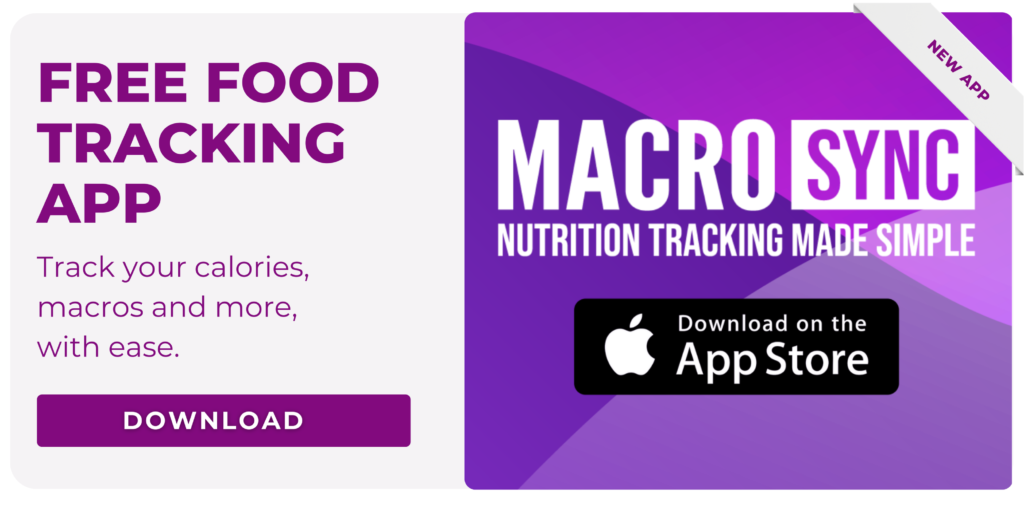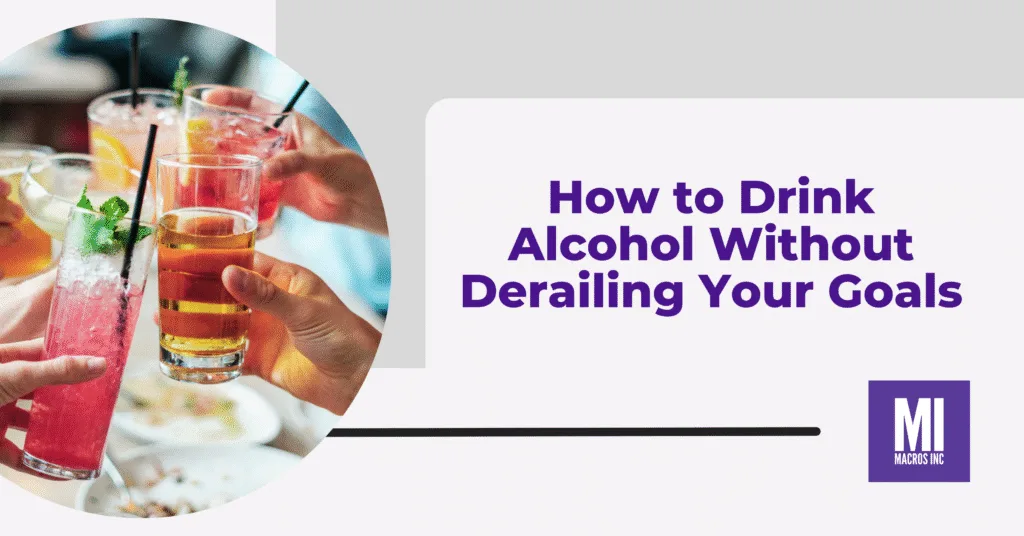Enjoying an alcoholic drink with friends, at a social gathering, or just while unwinding after a long day is something many people do. But for those working toward health and fitness goals, alcohol can sometimes feel like a roadblock.
It can make it harder to lose weight, recover from training, or maintain healthy habits. But what if you could still enjoy a drink or two while staying on track? The good news is that you can, as long as you approach it strategically.
Here are five ways to ensure you stay on track while consuming alcohol in a mindful way.
Jump to a Topic
How to Drink Alcohol Without Derailing Your Goals
1) Account for It in Your Calories
At the end of the day, weight loss and gain come down to energy balance. If you are working toward a goal that involves body composition, your calorie intake matters, and alcohol should be included in that equation.
Tracking your alcohol intake ensures that you stay within your caloric needs. There are a couple of ways to do this:
- Use tracking apps like Macro Sync to log alcoholic beverages. Many store-bought drinks, such as beer or seltzer, have calorie information on the label.
- If drinking mixed drinks, track each ingredient separately and assign seven calories per gram of alcohol. For reference, a standard shot contains around 14 grams of alcohol.
By logging your drinks, you can adjust your food intake accordingly and avoid unknowingly consuming too many calories.

2) Don’t Let Alcohol Influence Your Food Choices
It happens to the best of us. A few drinks in, and suddenly, those extra slices of pizza or that entire plate of nachos seem like a great idea.
Alcohol lowers inhibitions and impairs decision-making, including food choices. Research consistently shows that as alcohol intake increases, so does calorie consumption. The key to avoiding unnecessary snacking is to have a plan before you start drinking:
- Eat a satisfying, nutrient-dense meal before drinking to curb cravings.
- Set an intention before you start drinking to stick to your regular eating habits.
- Keep tempting, high-calorie foods out of sight if you know you tend to snack when drinking.
3) Keep Your Drinks Simple
The more ingredients a drink has, the more calories it likely contains. Some cocktails pack a serious caloric punch without you even realizing it.
For example:
- A standard piña colada has around 300 calories per drink.
- A Long Island iced tea can have upwards of 800 calories.
- In contrast, a vodka-soda or a rum and Diet Coke usually has fewer than 100 calories.
If you want to enjoy alcohol without overloading on extra calories, opt for simple drinks with fewer ingredients. Stick with clear spirits mixed with zero-calorie mixers, dry wines, or light beers.
- Gin & Diet Tonic or Soda Water – ~100 cal
- Skinny Margarita – ~130 cal (tequila, lime, splash of orange or agave)
- Light Mojito – ~100-120 cal (mint, lime, soda water — hold the syrup)
- High Noon Hard Seltzer – ~100 cal, made with real vodka and juice
- White Claw or Truly Hard Seltzer – ~100 cal, low sugar, low carb
- Loverboy Sparkling Hard Tea – ~90 cal, brewed tea and monk fruit sweetener
- Light Beer (e.g. Miller Lite) – ~96 cal
- Champagne or Dry Sparkling Wine – ~90-100 cal per glass
- Low-Alcohol Wine (FitVine or Cupcake LightHearted) – ~85-100 cal
4) Make a Plan and Stick to It
The key to drinking while maintaining progress is moderation. One or two drinks now and then won’t ruin your progress, but excessive drinking can quickly add up in terms of calories and negative effects.
Set a plan in place and stick to it:
- Decide ahead of time how many drinks you will have in a given week.
- Spread out your intake instead of binge-drinking all at once.
- Stay hydrated by drinking water between alcoholic beverages.
- Avoid making alcohol a daily habit if you are trying to maintain a calorie deficit.
Having a clear plan allows you to enjoy alcohol while staying aligned with your health goals. A few drinks here and there won’t make or break your progress, but mindless drinking and overconsumption can.
5) Stay Hydrated and Prioritize Recovery
Alcohol is a diuretic, meaning it dehydrates the body. Dehydration can lead to poor workout performance, increased fatigue, and slower recovery times.
To minimize the negative effects:
- Drink plenty of water before, during, and after consuming alcohol.
- Incorporate electrolytes to replenish lost minerals.
- Prioritize sleep, as alcohol can disrupt sleep quality.
- Plan lighter training sessions the day after drinking to avoid pushing yourself while dehydrated.
Staying hydrated and prioritizing recovery will help you minimize the impact alcohol has on your body, keeping you on track toward your goals.
Final Thoughts
Drinking alcohol doesn’t have to derail your progress. By accounting for it in your calories, being mindful of food choices, opting for lower-calorie drinks, setting a plan, and staying hydrated, you can strike a balance between enjoying yourself and reaching your goals.
Like with everything in health and fitness, the key is awareness and moderation. Make informed choices, enjoy your drinks in a way that fits your lifestyle, and keep moving forward toward your goals.
Try our nutrition coaching, for free!
Be the next success story. Over 30,000 have trusted Macros Inc to transform their health.
Simply fill out the form below to start your 14-day risk-free journey. Let's achieve your goals together!

